A STUDY IN DISMEMBERMENT (1914)
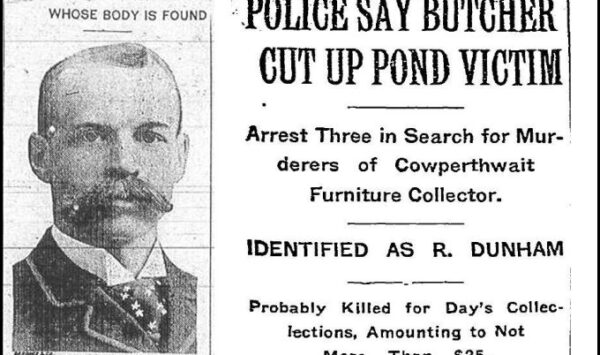
******************************************************************************************************************************** Brownstone Detectives investigates the history of our clients’ homes. The story you are about to read was composed from research conducted in the course of one of those investigations. Do you know the history of YOUR house? ******************************************************************************************************************************** When the pieces of a dismembered body started showing up in different locations in Brooklyn around Christmas of 1914, it didn’t take long before Brooklyn Detectives traced those body parts to a block on Macon Street in the Stuyvesant section of town. “The two pieces of torso which were found on Friday by boy skaters embedded in ice in a pond between Coney Island and Ulmer’s Park were identified yesterday afternoon as parts of the body of Rufus Dunham, 61 years old, of 752 Macon Street, Brooklyn.” So began the article that was to create a great sensation on Bedford-Stuyvesant’s Macon Street between Ralph and Howard avenues. DREDGING UP THE PAST When we uncovered this story a few years back, we had been researching a house on this block of Macon Street (near to Howard Avenue) for our first House History Book. We had thought it would be interesting to see who else had lived on the block over the past 125 years. During our historical research, up popped this gruesome and sensational story which must have created quite a stir on the block at the time. SEARCHING FOR THE KILLER The murder case, described as “one of the most disturbing that police of the city have had to cope with […]
SATAN’S CANDY SHOP (1911)
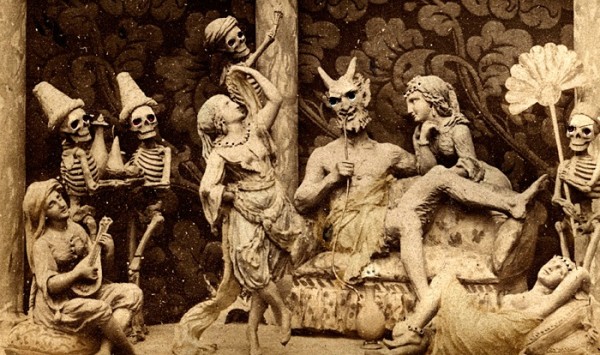
******************************************************************************************************************************** Brownstone Detectives investigates the history of our clients’ homes. The story you are about to read was composed from research conducted in the course of one of those investigations. Do you know the history of YOUR house? ******************************************************************************************************************************** If a man named Hell offered you some candy – would you take it? That was Otto Herman Hell’s problem. And, yes, in fact he was about to open a confectionery in Brooklyn on Broadway. THE DEVIL’S CONFECTIONER It must have been difficult growing up with a name like Hell. There were probably countless jokes and plays on the name. Otto must have been quite tired of it all by the time he reached the age of maturity, at which point he began thinking seriously about changing it. Having emigrated from Germany in 1891, he was 25 when the immigration officials must have looked up at him in surprise as he stood before them hoping to gain entry into the country. “Hell? Hell?” the official must have half-asked, half-shouted, incredulously. “O’Connor, come quick, or you’ll have Hell to pay!” Lots of uproarious laughter here, then a loud stamp, and then Hell was on to the next set of jokes somewhere in his new country. He probably found it curious in the early days, perhaps a bit enjoyable if he had had a playful streak. But, by George, it was 1911 now, and Otto was 36 with a wife and two children. He was more than ready to get serious with his […]
THE GHOST OF 281 STUYVESANT AVENUE (1901)
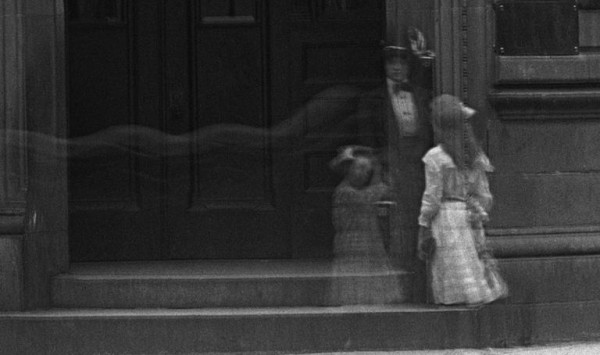
******************************************************************************************************************************** Brownstone Detectives investigates the history of our clients’ homes. The story you are about to read was composed from research conducted in the course of one of those investigations. Do you know the history of YOUR house? ******************************************************************************************************************************** “At last Stuyvesant Heights revels in the proud possession of a genuine haunted house.” This was back in 1901, when Stuy Heights was relatively young, the houses newish, and the ghosts scarce. But Stuyvesant Heights had everything back then – “a Republican Club, an amateur dramatic society,” and even “several asphalt streets where bashful maidens learn to wheel at night.” So why not a ghost? THE HAUNTING AT NO. 281 STUYVESANT AVENUE The Griffins, who had lived in the apartment house at the ground floor were terrorized by their electric bell ringing at 2 o’clock every afternoon. But they also heard “hollow groans,” “creepy sidesteps on the staircase,” and “unexpected trips from room to room of pieces of furniture.” It all got to be too much for the Griffins to handle, and so they fled. The Griffins moved to Williamsburgh. PERFECTLY GOOD EXPLANATIONS Some of the other tenants blamed the wind. A young woman who lived in the second floor apartment told an Eagle reporter that everything was perfectly explainable. “This house, you know, stands alone and the wind, when it sweeps into the vestibule, often comes hard enough to blow the whistle in the kitchen tube,” she explained. “Then it’s a fact that the pictures do move, but that’s caused […]
SHAKESPEARE AT NO. 24 BREVOORT PL (1928)
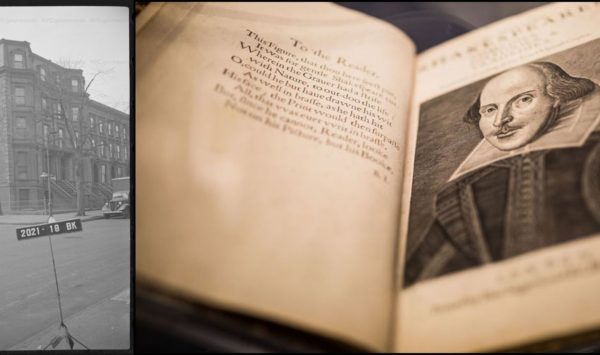
******************************************************************************************************************************** Brownstone Detectives investigates the history of its clients’ homes. The story you are about to read was composed from research conducted in the course of one of those investigations. ******************************************************************************************************************************** Henry C. Folger loved Shakespeare. His admiration for the author and his writings was such that he once paid $100K for a single folio of the bard’s work. The president of the Standard Oil Company was so smitten with Shakespeare’s works that, in 2014, a book, Collecting Shakespeare, was published about Folger and his collection. Folger, who started his relationship with Standard Oil as its director, would rise to become the chairman of its board, building a trusted relationship with the company’s owner, John D. Rockefeller, Sr. While frugal in the management of his money, Folger’s position with the largest oil company in the world certainly allowed him plenty of it to use in the pursuit of everything Shakespeare. And everything Shakespeare that he purchased for his collection eventually made its way to the library of their rented house at No. 24 Brevoort Place in Brooklyn, where the couple would live from 1910 through the early 1930s. FOLGER, BREVOORT, & SHAKESPEARE Henry Clay Folger’s collection of Shakespeareana included 35 copies of the 1623 first folio edition, of which only 200 copies were then known to be in existence. These earliest texts of William Shakespeare’s works were published during the 16th and 17th centuries in quarto or folio format. While quartos are smaller volumes, folios are large, tall volumes, roughly […]
WHEN BUSHWICK MET OCEAN HILL (1923)
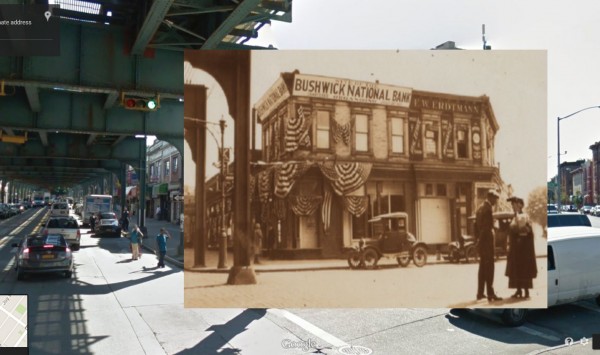
******************************************************************************************************************************** Brownstone Detectives investigates the history of our clients’ homes. The story you are about to read was composed from research conducted in the course of one of those investigations. Do you know the history of YOUR house? ******************************************************************************************************************************** “Ocean Hill” was still settling softly into the Brooklyn lexicon of place names as a working class suburb in 1923. Bushwick, on the other hand, was already very well-known in the borough for its German breweries and beer gardens. But where the two met – and they met, all right – there were SPARKS! (…or maybe a bank or real estate office….) This snapshot was taken at the intersection of Broadway and Hopkinson Avenue (later to be renamed Thomas S. Boyland Street). The building there on the corner in 1923 held the Bushwick National Bank and Frederick W. Erdtmann’s real estate offices. The Bushwick National Bank came into existence the same year that this photograph was taken – probably the reason for the photograph and the patriotic bunting all around the building; the bank ended up merging with the Globe Exchange Bank in 1929, and so had a short life of about six years. Frederick W. Erdtmann, a realtor who lived at 868 Macon Street and then above his real estate offices in this building, had filed for bankruptcy in 1913 before this photo was taken. He was back in the real estate business by 1919 and did well for himself in the 1920s. Who the old woman and the young […]
GUERRILLA MARKETING IN A DRESS (1903)
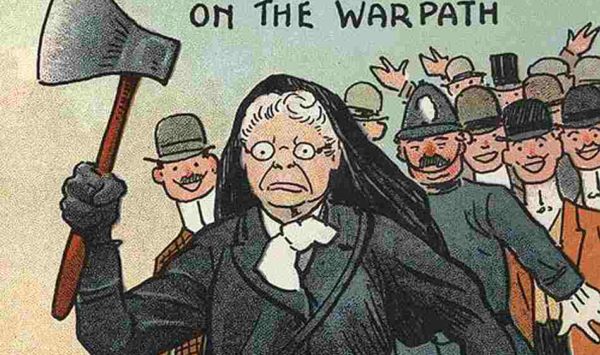
******************************************************************************************************************************** Brownstone Detectives investigates the history of our clients’ homes. The story you are about to read was composed from research conducted in the course of one of those investigations. Do you know the history of YOUR house? ******************************************************************************************************************************** When Brooklyn saloon owners saw Carrie Nation entering their Broadway establishments carrying her ax, their first thought was to protect their liquor. But when that grand and radical old figure of the Victorian temperance movement approached their bars, they were stunned at her request. “Gimme a drink – or else!” The original goal of Nation’s ax-swinging was to promote the temperance movement through the visual image of the destruction of its foe – liquor. It brought new prominence to a movement whose most visual image to date had been old women lambasting the drinking ways of men. When she started swinging that ax, though, she got attention, and so, in extension, did the temperance movement. CARRIE NATION – COMES TO BROOKLYN? But Nation, whose anti-saloon message was promoted primarily in Kansas, was a shocking sight in the Eastern District of Broadway. She had recently visited New York City, though, and so no one was willing to challenge that ax in the bars up and down the avenue – even so close to the liquor center of Brooklyn – Bushwick Avenue. “Dressed in a plush sacque, a neat fitting skirt, an old fashioned bonnet and carrying in one hand a dilapidated carpet bag and in the other a wooden ax, a person, […]
THE BOY HOODLUMS OF HANCOCK STREET (1899)
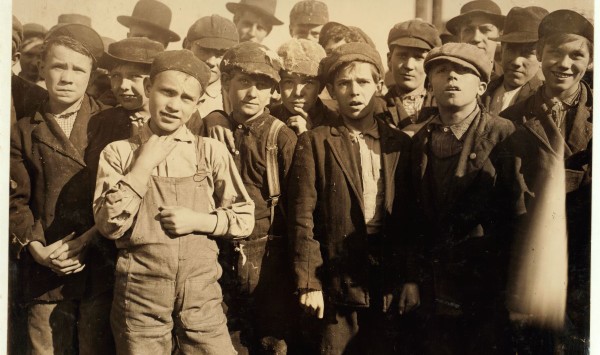
******************************************************************************************************************************** Brownstone Detectives investigates the history of our clients’ homes. The story you are about to read was composed from research conducted in the course of one of those investigations. Do you know the history of YOUR house? ******************************************************************************************************************************** If you were a boy hoodlum in “Bed-Stuy” back in 1899, then it is a good bet that you conducted your “outrages” along that stretch of Howard Avenue between Halsey and Hancock Streets. For it was there that a “small reign of terror” was “inaugurated” during this period, as small gangs of boys “armed with sticks and stones” prowled about the area with determined mal intent. A NEIGHBORHOOD COMPLAINS – THE EAGLE RAILS “The irrepressible and unregenerate young generation of boys in the vicinity of Howard avenue and Halsey street are making existence a heavy load to the law abiding population of that community,” railed the Brooklyn Daily Eagle. “The choicest lot of hoodlums in the city have banded themselves together,” the paper continued “and use that block as a fixed center, from which they conduct a campaign of well planned outrages for a radius of many blocks around.” A CASE IN POINT Two boys, in particular, were reported to the police after having assaulted a “little 10 year old boy who was going to the grocery store for his mother.” The boys, a 14-year-old member of the Earle family living at at 73 Howard Avenue and a boy named Goldstein, living at 96 Howard Avenue, “led the charge upon the […]
HOW CASEY THE COP SPELT “KOSCIUSZKO” (1904)
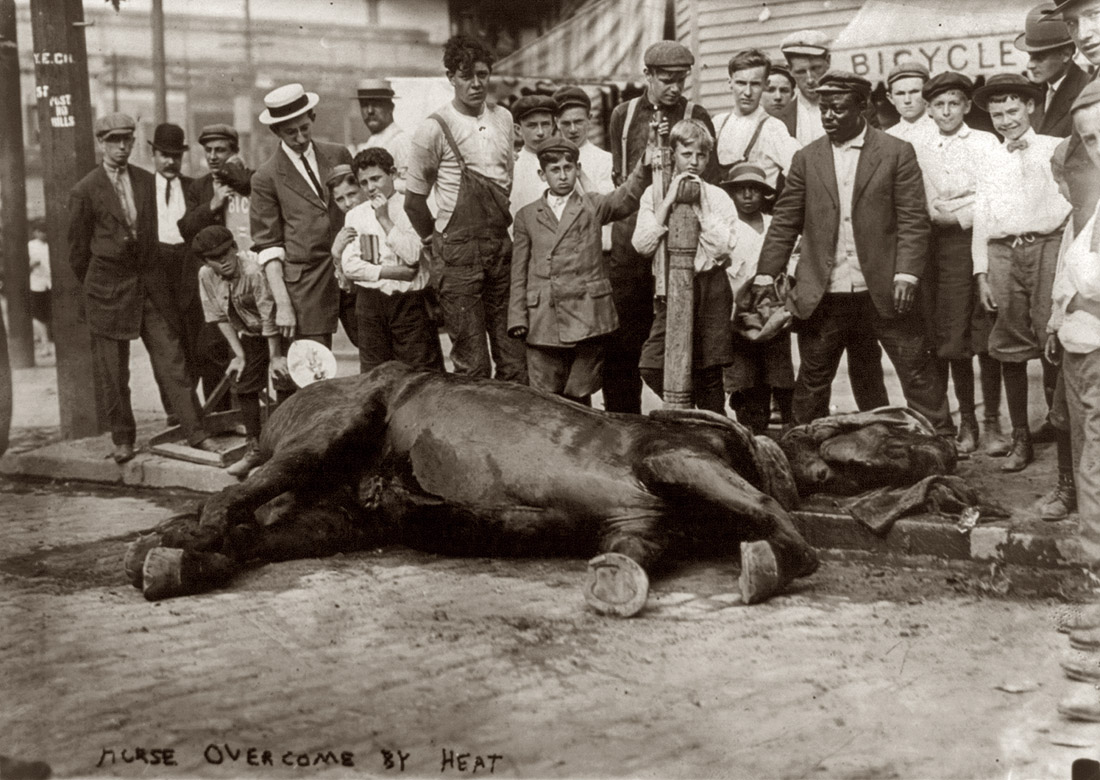
******************************************************************************************************************************** Brownstone Detectives investigates the history of our clients’ homes. The story you are about to read was composed from research conducted in the course of one of those investigations. Do you know the history of YOUR house? ******************************************************************************************************************************** Andrzej Tadeusz Bonawentura Kościuszko was a Polish military officer who helped the U.S. to gain independence from the British during the Revolutionary War. Because of his dedication there are numberous public locations named after him – including a street in Bed-Stuy. Even more numerous, though, are the tales about the difficulty in spelling the man’s name. The best tale, though, involves a tail – and a horse and a policeman. SPELLING KOSCIUSZKO “There was once an Irish policeman who was responding to the presence of a dead horse on Kosciuszko Street. Upon arriving at the scene of the dead horse, Casey began to write his report. When he got to the part where he was supposed to write the location in which the horse was discovered, the policeman faltered. “He did not know how to spell the street name. “So, Casey looked at the horse and then at his report, and he thought. A few moments later, he shoved the half-finished report in his cap, grabbed the horse by its tail, and began dragging it down the street to the corner of Marcy Avenue. Once there, he stopped, pulled the report out from his cap, and added the ‘location’ of the dead horse – ‘Marcy Avenue.’” By the way, back in […]
AUNT CAR vs. THE IMMIGRATION ACT OF 1917
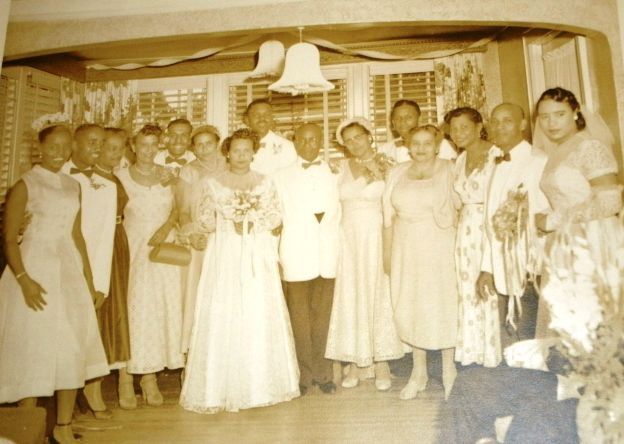
******************************************************************************************************************************** Brownstone Detectives investigates the history of our clients’ homes. The story you are about to read was composed from research conducted in the course of one of those investigations. Do you know the history of YOUR house? ******************************************************************************************************************************** (In the process of writing a House History Book, we research the history of a home’s owners. While researching one particular brownstone, we discovered that – soon after purchasing her brownstone in the 1950s – the Federal Department of Justice issued a warrant for one owner’s arrest and deportation. Sadly, this was not a rare event in Bedford-Stuyvesant at the time.) JAMES GILL MEETS “AUNT CAR” It was probably at some point after James Henry Gill, a mechanic from Trinidad, had registered for the Selective Service in 1942 that he met Caroline Beatrice McLean. McLean, a former schoolmarm from Barbados was then working as a garment worker and living with her sister in an apartment in Harlem. The exact date, time and place of the encounter is lost to the ages. What we do know, however, is that once they did meet they made a great match. Eventually, the couple would take the “A” Train – soon to become famous by way of Duke Ellington’s song – to Bedford-Stuyvesant. Once in Bedford-Stuyvesant, they moved into a brownstone at No. 9 Arlington Place, close to Bedford Avenue. MOVING TO MACON STREET A few years later, on 15 May of 1951, James and Caroline purchased 738 Macon Street from the former owners, the […]
BOYS HIGH GRADUATING CLASS (1907)
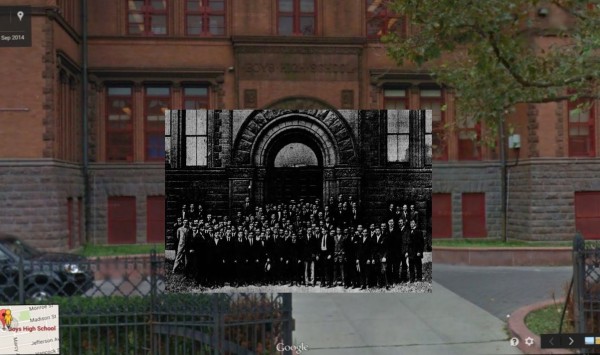
The inset black & white photograph is from the Brooklyn Daily Eagle of Wed., 19 June 1907, showing a portrait of the 1907 graduating class of Boys High School – 112 years ago! It has been superimposed over a Google Maps image of the exact same location today. Follow @BrownstoneDetec ———————————————————————————————————————– The Brownstone Detectives The story you have just read was composed from extensive historical research conducted by The Brownstone Detectives. We perform in-depth investigations on the historic homes of our clients, and produce for them their very own House History Books. Our hardbound books contain an illustrated and colorful narrative timeline that will bring the history of any house to life. Contact us today to begin discovering the history of your home.